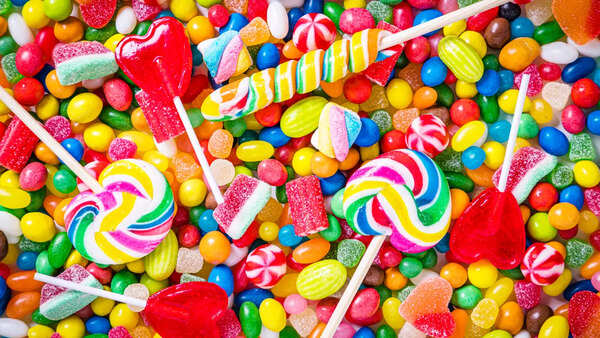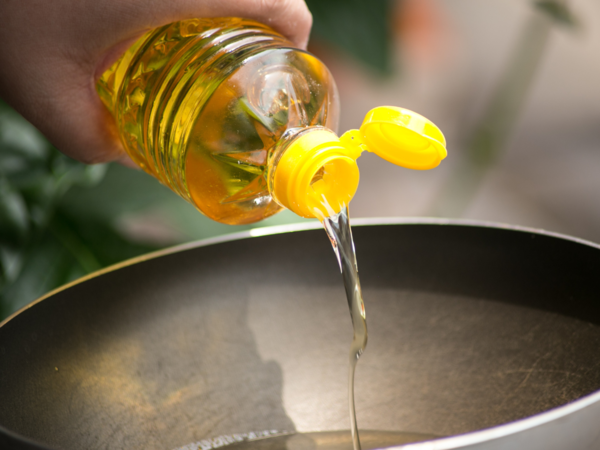Many seemingly harmless store-bought foods contain hidden ingredients that pose significant health risks. Food dyes like Red 40 and Yellow 5 are linked to hyperactivity, while titanium dioxide, used to whiten foods, is classified as a potential carcinogen. Other concerning additives include brominated vegetable oil, potassium bromate, and high fructose corn syrup, all associated with various health problems.

While reading food labels is a good start, it's often not enough to protect you from potentially harmful substances lurking in your groceries. Many popular items, from breakfast cereals to protein bars, contain hidden ingredients that can negatively impact your health. Here are some everyday ingredients to be wary of:
Food dyes are prevalent in a wide range of products, from candies to flavored rice. While these synthetic dyes make food look more appealing, they may come at a significant cost to your health.
Artificial food dyes, such as Red 40 and Yellow 5, have been linked to neurobehavioral issues, especially in children. Some research suggests that these dyes can increase hyperactivity. Recently, the US Food & Drug Administration (FDA) banned Red No. 3, a dye used to give foods and beverages a bright cherry-red color, due to its association with cancer. However, this dye continues to be used in several countries.

Titanium dioxide is a chemical used to whiten foods like coffee creamers, candies, sunscreen, and toothpaste, making them more appealing. However, the FDA categorizes this chemical as a Group 2B carcinogen, indicating it is possibly carcinogenic to humans. The nanoparticles present in titanium dioxide may also cause inflammation and oxidative stress.

Brominated vegetable oil (BVO) is an emulsifier used to stabilize citrus-flavored drinks, preventing flavor oils from separating. Studies have linked BVO to neurological problems, thyroid dysfunction, and heart and liver damage. Although banned in Europe and the US, it is still used in many other countries.

Potassium bromate is a flour additive used to strengthen dough in bread-making. The World Health Organization classifies it as a possible human carcinogen. This ingredient is banned in Europe, Canada, and other regions due to its potential toxicity. Potassium bromate is considered a nephrotoxin in both animals and humans and has been linked to kidney and thyroid tumors in animals.

High fructose corn syrup (HFCS) is a sweetener commonly used in sodas and snacks. It is considered a leading contributor to obesity and diabetes. Research indicates that HFCS intake can disrupt metabolism, increasing fat storage and insulin resistance. This ingredient is found in a wide variety of products, from sugary beverages to processed foods.
Newer articles
Older articles
 Emma Raducanu Shuts Down Carlos Alcaraz Dating Rumors, Confirms US Open Mixed Doubles Partnership
Emma Raducanu Shuts Down Carlos Alcaraz Dating Rumors, Confirms US Open Mixed Doubles Partnership
 Woakes Regrets Umpiring Decisions as India Seize Control on Day 1 at Edgbaston
Woakes Regrets Umpiring Decisions as India Seize Control on Day 1 at Edgbaston
 Black Caps Primed for Blockbuster Home Summer Against Cricket Giants
Black Caps Primed for Blockbuster Home Summer Against Cricket Giants
 Gambhir Defends India's Tailenders After Test Collapse, Cites Missed Catches as Key Factor
Gambhir Defends India's Tailenders After Test Collapse, Cites Missed Catches as Key Factor
 SA20 Teams Given Green Light for Six Player Retentions Ahead of Auction
SA20 Teams Given Green Light for Six Player Retentions Ahead of Auction
 Rishabh Pant: Revolutionizing Cricket with Unconventional Batting, Says Greg Chappell
OR
Greg Chappell Hails Rishabh Pant as Cricket's "Reinventor"
Rishabh Pant: Revolutionizing Cricket with Unconventional Batting, Says Greg Chappell
OR
Greg Chappell Hails Rishabh Pant as Cricket's "Reinventor"
 Mirabai Chanu: Olympic Medalist's Relentless Training Regimen Extends Even to Family Time
Mirabai Chanu: Olympic Medalist's Relentless Training Regimen Extends Even to Family Time
 Rishabh Pant's "Game-Changing" Centuries vs. England Earn Praise From Greg Chappell
Rishabh Pant's "Game-Changing" Centuries vs. England Earn Praise From Greg Chappell
 Small Steps, Big Heart: Science Reveals Simple Habits for Optimal Cardiovascular Health
Small Steps, Big Heart: Science Reveals Simple Habits for Optimal Cardiovascular Health
 Kavya Maran, SRH CEO, Addresses Viral Meme Status and Passion for Cricket Team
Kavya Maran, SRH CEO, Addresses Viral Meme Status and Passion for Cricket Team